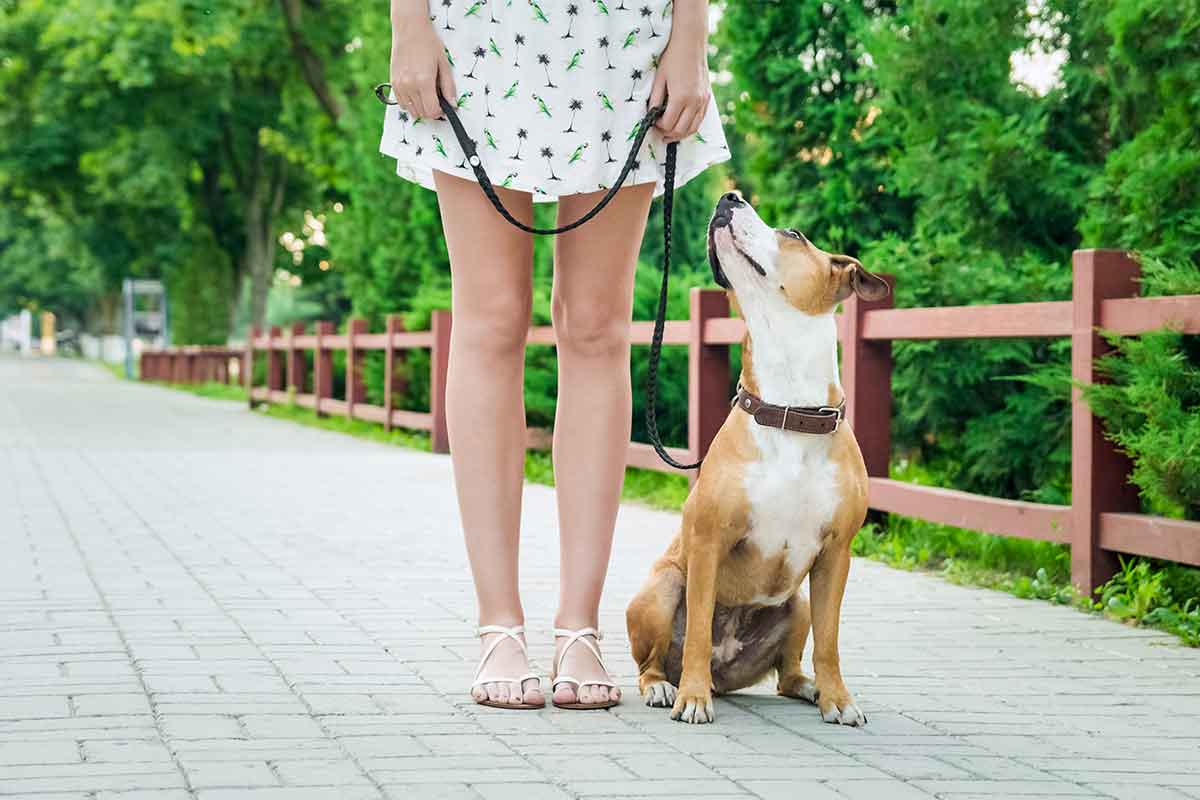Walking one’s dog is extolled as a wonderful social opportunity; it’s fun to spend time with your canine best friend while talking to other dog owners. Plus, you can get some exercise, smell the flowers, and appreciate the sunset.
While this is often true, the enjoyment will quickly evaporate if your dog suffers from leash reactivity. If he barks when he sees other dogs, hides behind your legs, or pulls as hard as he can toward the other dog, then walks are no longer fun.
The Causes Are Many
Leash reactivity can arise from a variety of causes, although most seem to be rooted in fear. A puppy who hasn’t been well socialized to other dogs may be worried when she encounters them. A dog who has been attacked by another dog may also be frightened. Some dogs are worried when on a leash, feeling confined with no means of escape.
Aggression and the desire to protect the owner or territory causes some dogs to misbehave on leash. Some dogs are braver when walking with more than one owner and others are more confident when walking with another dog. A united front is stronger, of course.
There also seems to be a biological cause of leash reactivity. Testosterone has been blamed for causing this behavior in the past, but ongoing research is looking at other hormones that may trigger a variety of behaviors, including leash reactivity.
Start With Training
No matter the cause of leash reactivity, you can take steps to alleviate its damage. Begin with a good foundation of basic obedience skills. This training will not only help improve your dog’s overall behavior, but also your communication skills with your dog.
There are a variety of humane and positive techniques to set your dog up for success and reinforce desired behavior, including rewarding your dog for offering to pay attention to you and for seeing another dog and not reacting. Another important skill to practice is loose leash walking. A tight leash can make a dog feel as if there is no escape from a frightening situation, so during training, concentrate on keeping some slack in the leash.
Alleviate Reactions
It’s easier to manage leash reactivity if you have a plan. This plan (or plans) will vary according to the situation.
If, for example, you see an excited, perhaps out-of-control dog walking toward you on the sidewalk on the same side of the street, you can cross the street, turn up a side street, or walk on the other side of a parked car. In this situation, where an already excited dog will amp up your dog, avoidance is best.
However, if the dog walking toward you seems calm and well-behaved, then depending on your dog’s level of excitement you may move away from the path of travel. Once away from the path where that dog will be walking, ask your dog to perform previously taught behaviors and reinforce him often for his responses.
Ideally, walk your dog at less busy times so your dog can be more successful.
Never allow any dog (or dogs) to approach your dog. A leash-reactive dog is not going to consider this a social occasion but instead will look upon it as a threat.
What Not To Do
Please don’t try to “socialize” your dog to change leash reactivity. The age for primary socialization is in early puppyhood. Trying to force social interactions with a leash-reactive dog will create more anxiety.
Treats and toys are great training tools to lure your dog’s attention from the other dog and then reward him for cooperating with you. Keep training fun. No matter what training technique you use, fun and play should be part of the process. Correcting a fearful dog can cause more anxiety. Your goal is to build a relationship with your dog so that you have his confidence and trust. Then he will look to you for guidance when another dog approaches instead of trying to go on the attack.
Safety and Assistance
Fear and anxiety can make our canine friend respond in less favorable ways. If there is a safety concern for you, your dog, other animals, or other people, avoid walking your dog and contact a qualified behavior specialist for assistance, such as a board-certified veterinary behaviorist (www.dacvb.org) or ask your Fear Free Certified Veterinary Professional, who they recommend in your area.
This article was reviewed/edited by board-certified veterinary behaviorist Dr. Kenneth Martin and/or veterinary technician specialist in behavior Debbie Martin, LVT








